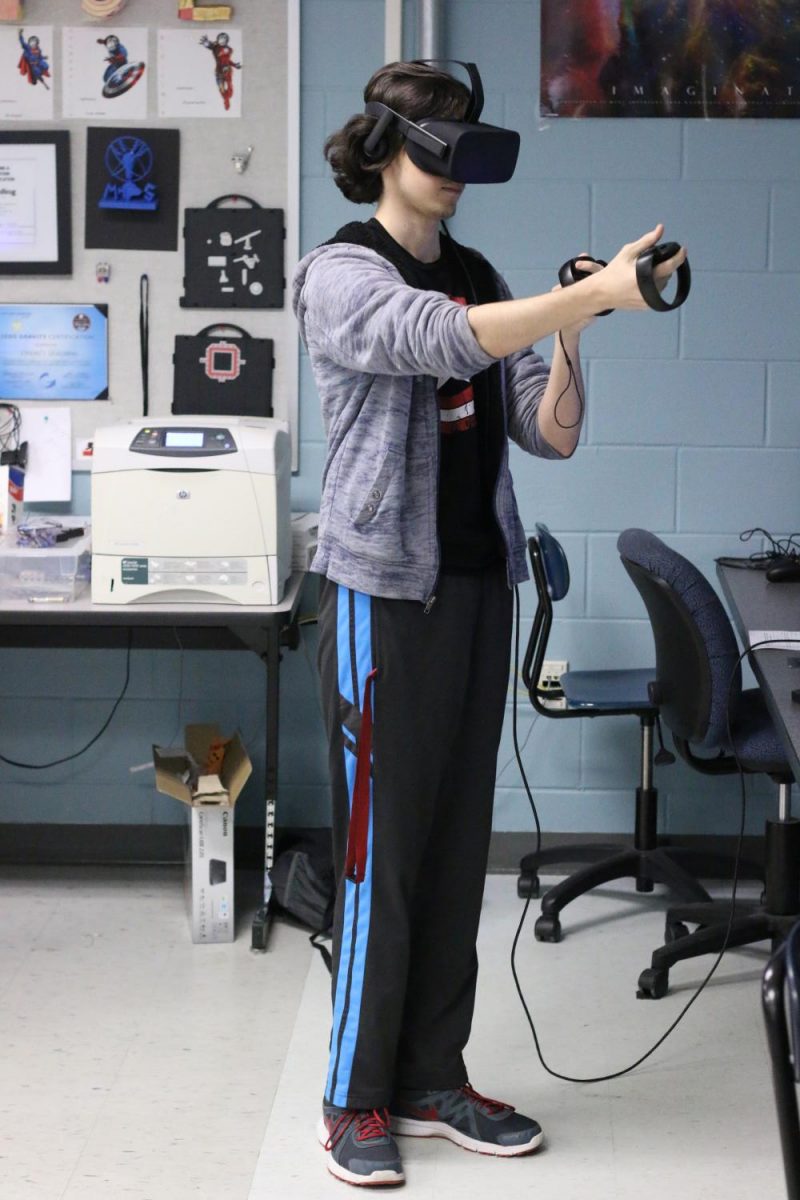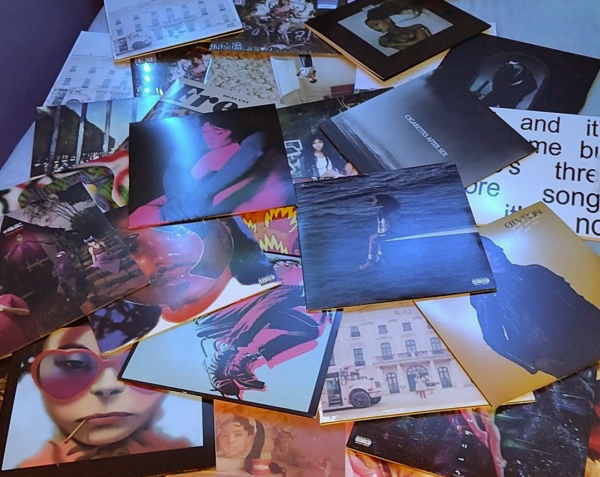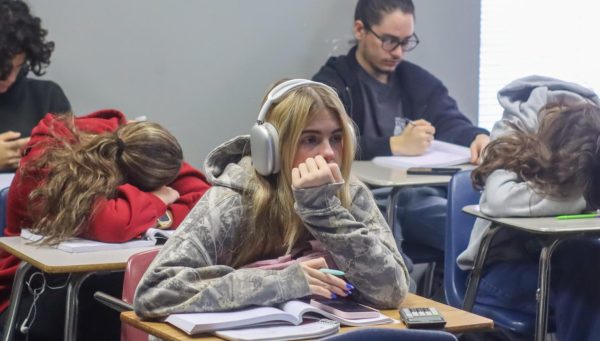Super SWAT simulation
Super Team creates SWAT training simulation
photo by Chatham Farrell
Senior Samuel Lee practices using the virtual reality lab. Many Modeling and Simulation projects, including the SWAT simulation, are created with the use of the VR lab.
A virtual showcase of the Special Weapons and Tactics team sounds like a high-tech video game, but it is the latest project of the Modeling and Simulation Club. The club has been steadily growing and because of this, took on a more ambitious project.
‘The Super Team’, ten upper class members of Modeling and Simulation, are creating an advanced SWAT training simulation.
The members of the Super Team are: seniors Austin McGowan, Samuel Lee, Edgar Madruga, Julian Mousseau, Prince Odimegwu, Olivia Jacques-Baker, Varadha Anandakumar, Roman Brock-Edgar, Tristen Campbell, and junior Flavio Teimouri.
Prepared to showcase their project in November, the Super Team worked over the summer, brainstorming ideas for this project. They have also done extensive research online, watching videos and documentaries, and talking to members of the Oviedo SWAT team. For the simulation, The Super Team needed to ask the ‘how does it really happen’ questions.
While most people would call this “just another video game’, it is really a virtual reality layered simulation. The simulation stands out, because it is a multi-player game, and it focuses on communication and teamwork.
“We’ve seen globally the challenge of rioting, with massive amounts of people in the U.S. and elsewhere in the world, where [SWAT] teams have to come in,” said Modeling and Simulation teacher Lindsey Spalding. “It’s easy to get dispersed, not communicate effectively to calm the situation.”
The project helps to reduce problems through communication. The ultimate goal of this real-world application is to be used to practice similar situations. Because training can be expensive, the simulation would mimic real-world problems like a riot, and SWAT members have to work together through communication to calmly assess the problem at hand.
“SWAT teams would normally go in a building [for live simulation training] where they would decide on how to do things, how to enter and how to get their task completed,” project leader Austin McGowan said. “We are putting them in a more realistic environment, like on a city street or in a subway, things they might not be able to do because of funding reasons in the real world.”
Large conflicts can and do happen in school situations, which can be difficult to recreate in real life. If a city SWAT team had to come in and deal with students in a mass situation, they could practice calming everybody and get the situation under control. The SWAT team would have that chance to practice in a simulated environment pretty close to what they would experience in the real world.
“We’re mainly working in a test world,” McGowan said. “We’re in a blank canvas testing different items.”
The actual modeling and simulating part of the project is complex. The team uses 2-D art concepts and brings them into building the 3-D environment. Those buildings can be pulled into the virtual reality simulation, which is accessible for multiple players to engage in the situation.
In simpler terms, the Super Team, after conducting their research, sits at a computer with the virtual reality software and designs images. These high fidelity pictures of the environment and assets are made into a virtual reality simulation, where players can interact with the images they created.
The National Center for Simulation has sponsored the project for the Interservice Industry Training Simulation & Education Conference, a national gathering Nov. 27 through Dec. 1.
“We’re helping [NCS] build their workforce, and for doing that they give students the opportunity to go to the nationwide simulation conference to showcase what they are learning in this program to the industry world,” Spalding said. “It’s a win-win for our school and the industry.”
Your donation will support the student journalists of Hagerty High School. Your contribution helps us publish six issues of the BluePrint and cover our annual website hosting costs. Thank you so much!







